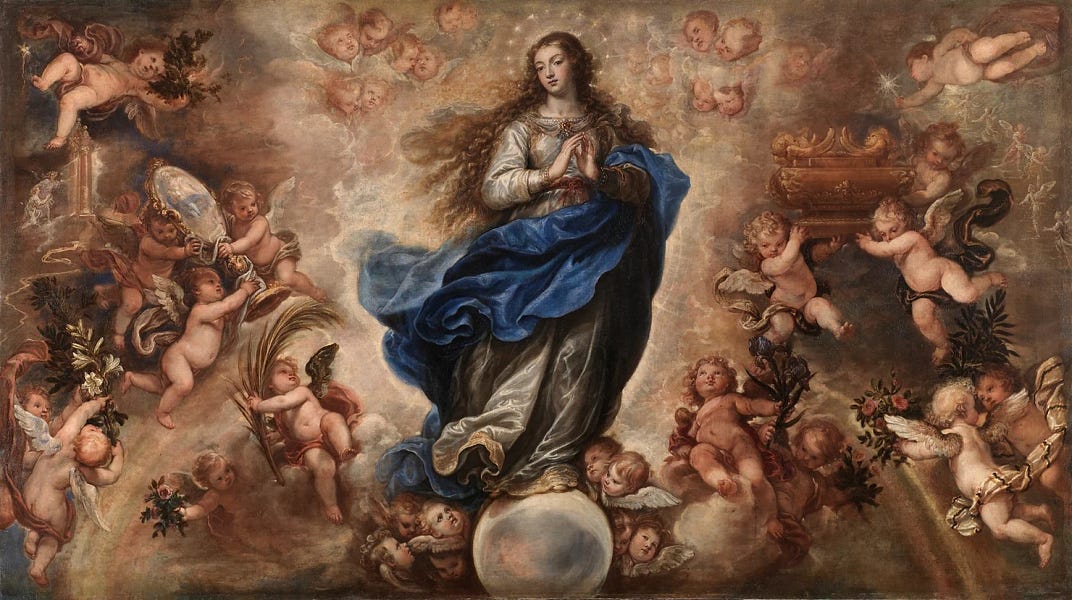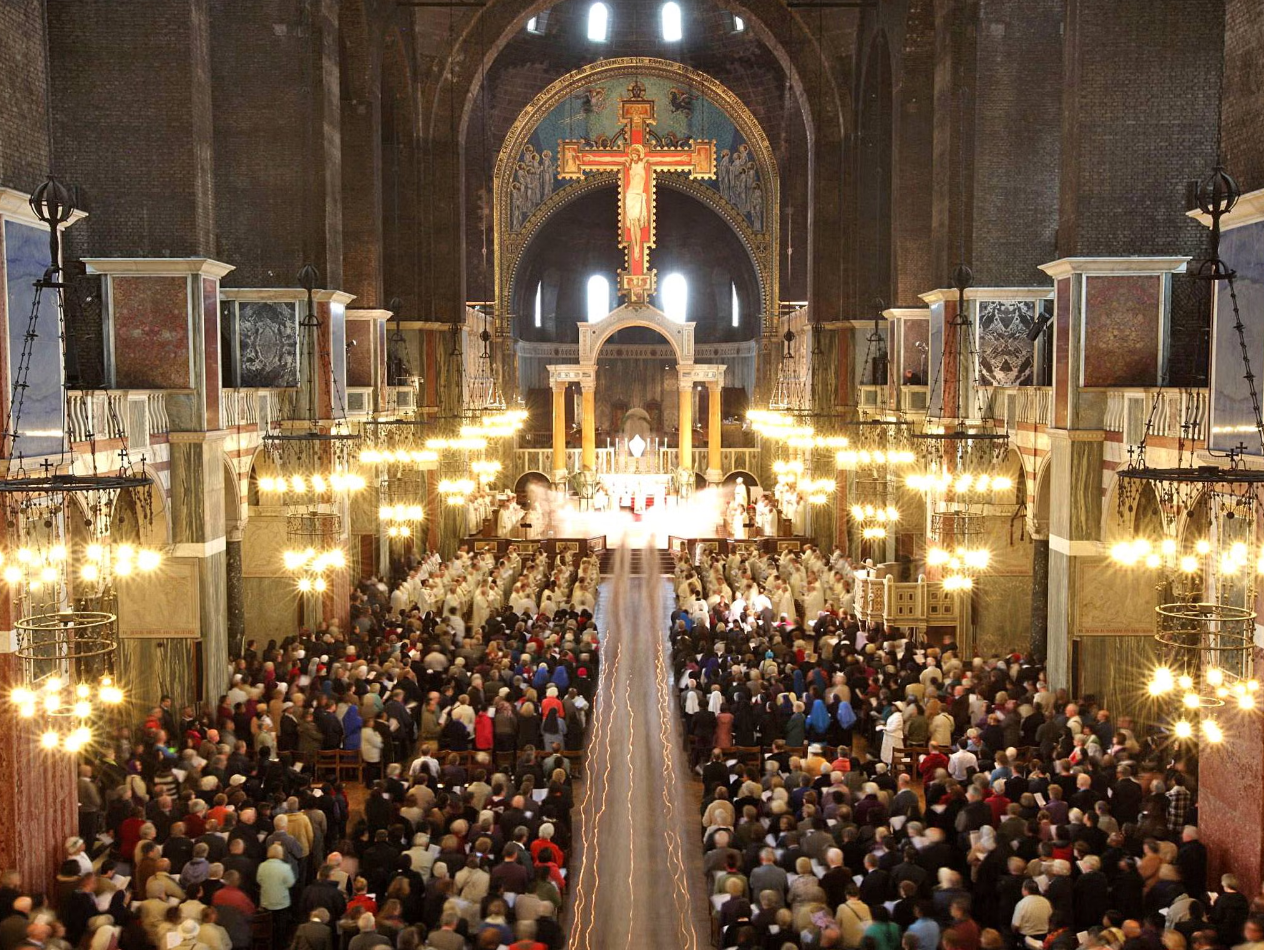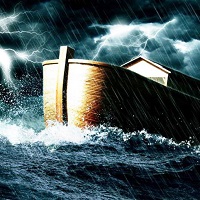The push for the Immaculate Conception came from a mix of theologians, popes, and Catholic laypeople who elevated Mary’s role over time:
- Theologians like Duns Scotus: As mentioned, Scotus argued in the 13th century that God could have preserved Mary from sin, and it was fitting for the mother of Jesus to be sinless. His ideas were influential among Franciscans, who promoted Marian devotion.
- Catholic Popes: Popes like Sixtus IV and Pius IX played key roles. Sixtus IV laid the groundwork by approving the feast day, while Pius IX, under pressure from Catholic clergy and laypeople, made it official dogma. Pius IX relied on his authority as pope, claiming “infallibility” to settle the debate.
- Popular Devotion: By the 19th century, devotion to Mary was widespread in Catholic culture. Many Catholics believed Mary was uniquely holy, and the idea of her being sinless resonated with their piety. This popular support pressured the Church to formalize the doctrine.
How Was It Justified?
Catholics justify the Immaculate Conception using a mix of tradition, theology, and selective Bible verses:
- Tradition Over Scripture: Since the Bible doesn’t explicitly support the doctrine, Catholics rely on “sacred tradition” and the Church’s authority to interpret it. They argue that the doctrine developed over time as the Church gained deeper insight into Mary’s role.
- Misinterpreted Verses: Catholics often cite Luke 1:28 “And the angel came in unto her, and said, Hail, thou that art highly favoured, the Lord is with thee: blessed art thou among women,” where the angel Gabriel calls Mary “highly favoured” (or “full of grace” in Catholic translations like the Douay-Rheims). They claim this means she was sinless. However, the Greek word kecharitomene (“highly favoured”) indicates God’s grace bestowed on her, not that she was sinless from conception.
- Theological Reasoning: Catholics argue that since Jesus was sinless, His mother had to be sinless to bear Him. They say original sin would have tainted Jesus’ birth, so God preserved Mary from it. This assumes, without evidence, that sin is passed through the mother rather than the human nature inherited from Adam.
Why the Immaculate Conception Is Unbiblical
The doctrine of the Immaculate Conception contradicts the clear teaching of the King James Bible. Here’s why:
- All Have Sinned: Romans 3:23 “For all have sinned, and come short of the glory of God,” states clearly that all humans are sinners. The Bible makes no exception for Mary. The only sinless person in Scripture is Jesus Christ (Hebrews 4:15 “For we have not an high priest which cannot be touched with the feeling of our infirmities; but was in all points tempted like as we are, yet without sin”).
- Mary Needed a Saviour: In Luke 1:47 “And my spirit hath rejoiced in God my Saviour,” Mary herself acknowledges her need for a Saviour. If she was sinless from conception, she wouldn’t require salvation.
- No Scriptural Support: The Bible never states that Mary was conceived without sin or lived a sinless life. The focus is on Jesus’ sinlessness, not Mary’s. 1 Timothy 2:5 “For there is one God, and one mediator between God and men, the man Christ Jesus,” emphasizes that Jesus alone is the mediator, not Mary.
- Original Sin Applies to All: Psalm 51:5 “Behold, I was shapen in iniquity; and in sin did my mother conceive me,” reflects the universal human condition of being born with a sinful nature, inherited from Adam (Romans 5:12 “Wherefore, as by one man sin entered into the world, and death by sin; and so death passed upon all men, for that all have sinned”). There’s no biblical basis for exempting Mary.
- Historical Development Shows Human Origin: The doctrine’s late development (formalized in 1854) shows it’s a man-made tradition, not a biblical truth. Early Christians didn’t teach it, and even Catholic theologians debated it for centuries. If it were essential, it would have been clear from the start.
Catholic Arguments and Refutations
Catholics often raise these points to defend the Immaculate Conception, but they don’t hold up:
- “Mary had to be sinless for Jesus to be sinless.” This assumes sin is passed through the mother, but the Bible teaches that sin entered through Adam (Romans 5:12 “Wherefore, as by one man sin entered into the world, and death by sin; and so death passed upon all men, for that all have sinned”). Jesus’ sinlessness comes from His divine nature and the Holy Spirit’s work in His conception (Luke 1:35 “And the angel answered and said unto her, The Holy Ghost shall come upon thee, and the power of the Highest shall overshadow thee: therefore also that holy thing which shall be born of thee shall be called the Son of God”), not from Mary’s status.
- “The Church’s authority confirms it.” Catholics claim the Pope’s infallibility and Church tradition validate the doctrine. However, the Bible warns against adding to God’s Word (Revelation 22:18 “For I testify unto every man that heareth the words of the prophecy of this book, If any man shall add unto these things, God shall add unto him the plagues that are written in this book”). Human authority can’t override Scripture.
- “Early Christians believed it implicitly.” Catholics point to vague references in some church fathers’ writings about Mary’s purity. But these are often poetic or exaggerated, not doctrinal statements about her conception. The clear teaching of Scripture takes precedence over later traditions.
Conclusion
The Immaculate Conception is a Catholic doctrine that emerged over centuries, driven by theological speculation and popular devotion, not by the Bible or corrupted Scripture. It was formalized in 1854 by Pope Pius IX, building on ideas from theologians like Duns Scotus and earlier papal support. However, it lacks any biblical foundation and contradicts clear verses like Romans 3:23 and Luke 1:47. The King James Bible teaches that all humans, including Mary, are born with a sinful nature and need a Saviour. Only Jesus is sinless, and elevating Mary to a sinless status detracts from His unique role as our Mediator.
For further reading on refuting Catholic doctrines, see www.bible.ca.




